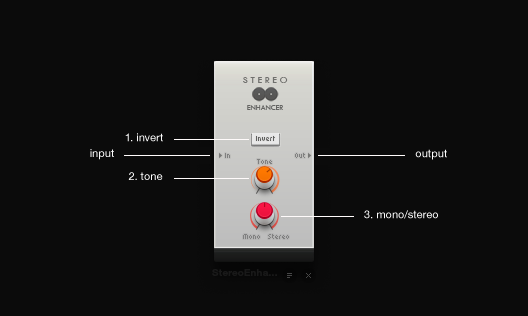Stereo Enhancer
The Stereo Enhancer changes the stereo image of the input signal. This device allows you to blend the signal from mono to an increased stereo spread. This device works by splitting the frequency band of the inputted signal and then delaying the higher frequencies before merging the signals back together.

invert - Inverts the delay of the stereo channels.
tone - Specifies the cut-off frequency above which the stereo processing will begin.
mono/stereo - The first range of this parameter (0 - 50%) can be used to merge the left and the right channels into mono. The second half of the parameter’s range (between 50% - 100%) will spread the stereo.
TIPS!:
It is important to remember that not everybody will be listening to your track on stereo headphones, therefore it is important to test your track on speakers as well as listening to it from a distance.
One problem that could be encountered is that if the stereo spread is too large, sounds with higher frequencies (like hihats) will sound doubled. This can be combated by decreasing the stereo spread.
If the stereo spread is too low then flanging may occur at the transition band between the high and the low frequencies. This can be mediated by either modifying the cut-off frequency or by slightly increasing the stereo spread.
When working with higher frequencies (like hihats) a sensible setting for the Mono/Stereo parameter is between 60% and 70%. Once an optimal stereo spread is achieved the tone can be adjusted so that the transition band falls below the higher frequencies but above the body of the track.